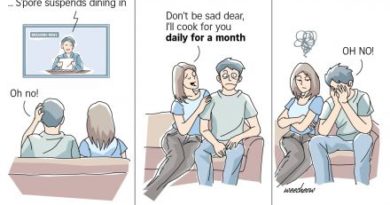IMMIGRATION: ANALYSIS- Immigrants: The weight of waiting

CRISPIN R. ARANDA
TO a petitioner (the individual eligible to sponsor a qualified family member) and a visa beneficiary (the person being sponsored), waiting for the interview schedule at the US Embassy weighs heavily indeed.
The immigrant visa interview will be scheduled only if the visa beneficiary is considered “documentarily qualified,” i.e., all the correct and appropriate fees have been paid and the documents for the specific visa category have been submitted confirming continuing eligibility for the preference category.
The burden is heavier for the visa beneficiary rather than the petitioner who is a lawful permanent resident or green card holder.
To take one case, for example. Emil was sponsored by his 60-year-old father, Sergio who had been petitioned earlier by his eldest daughter (already a US citizen) on August 1, 2008.
Since the parent of a US citizen is an “immediate relative” under US immigration rules, Sergio was not covered by the yearly cap for the Philippines – averaging 25,620, the annual per country allocation.
The waiting period for Emil’s father was short. The approval notice was issued March 12, 2009—just seven months. After being forwarded to the National Visa Center and completing documentation, Sergio was interviewed sometime in August 2009.
The downside is that the parent cannot bring any other child (unmarried, below 21, whether biological, adopted or stepchild). Emil is a biological son, but he had to be left behind. He was 18 years old then.
After getting his green card in the mail, Sergio filed a petition for Emil on June 2, 2010. Since Sergio was still a lawful permanent resident, Emil’s category was under the F2A preference – the minor child of a lawful permanent resident. He was still below 21; he was 19 years old.
In June 2010, the Visa Bulletin showed that for F2A petitions for Philippine applicants, those filed on or earlier than January 1, 2008 were being scheduled for interviews. From the looks of it, Emil would be waiting for only two years. However, he would turn 21 before his priority date would become current.
The priority date is the date the petition is received and acknowledged by the USCIS. Emil’s petition had a June 2, 2010 receipt date. His petition was not current at the time. Only Philippine F2A petitions filed on or earlier than January 1, 2008 were being scheduled for interviews because their priority dates were current, immigrant visas are available and – if all fees were paid and documents submitted – these F2A beneficiaries would be scheduled for interview at the US Embassy in Manila.
Two years after, the F2A priority date for the Philippines moved two years. Since Emil turned 21, his category changed to F2B. In June 2012, Philippine F2A petitions filed on or earlier than January 1, 2010 were being scheduled for interview. While Emil’s priority date remains the same, he would have to look at the priority date of F2B since he had turned 21 and his father, Sergio, remains a green card holder.
The F2B cut-off date for Philippine applicants then was December 8, 2001. Instead of just waiting two years had he remained in the F2A category, Emil would have to wait for nine years instead of just two.
.
– SPACE RESERVE FOR YOUR ADVERTISEMENT –
.
In two years time, Sergio would be eligible to apply for US citizenship. If he does and he obtains his Certificate of Naturalization, Emil’s category would change to F1, an unmarried over-21 son of a US Citizen.
The June 2014 Visa Bulletin shows F1 petitions for Philippine applicants filed on or before June 1, 2002 could be scheduled for an interview. Remember Emil’s category converted to F2B when he turned 21.
As additional fodder to the dilemma, the Child Status Protection Act was passed on August 6, 2002, allowing F2B beneficiaries like Emil to request for an opt-out, meaning he would rather remain in the F2B category instead of being automatically converted to F1.
What to do?
The F2B was moving faster than the F1 so Sergio and Emil agreed that Sergio should apply for citizenship, but Emil would pursue the opt-out privilege.
True enough. This month’s Visa Bulletin shows that the Philippines’ F2B cut-off date is still ahead of the F1 by four months.
This year, Emil is eight years older with a live-in partner, Cynthia. They have two kids, ages 2 and 5. Cynthia’s parents – being devout Catholics – have been urging Emil and Cynthia to get married, to spare their children from teasing in school for being illegitimate children.
If Emil gets married, however, his category will change to F3, setting his priority date further down the waiting line. In November 2018, F3 petitions filed on or before June 22, 1995 are being scheduled for interviews. That would mean another 15 years of waiting instead of just three.
Emil and Cynthia most probably would opt to remain “living in sin.” Then they also have to contend with the fraudulent birth certificates of their children.
Anticipating that Cynthia’s parents would push them to get married, Emil had put down in the birth certificates that he and Cynthia were married. Since Emil could look forward to being interviewed for his immigrant visa in three years’ time, Emil now faces a new dilemma: he could bring his children as derivative beneficiaries of his F2B petition, but the birth certificates would have to be officially corrected. Because the issue is more than just a clerical or typographical error, a court petition and order would be required.
Had Emil and Cynthia indicated they were not married, Emil could still have their children use Emil’s family name pursuant to Republic Act 9255 of 2016.
This issue is more procedural than emotional unlike the other conundrum.
Emil and the children could be issued their immigrant visas, but Cynthia would have to be left behind since she is not married to Emil. However, Emil could return to the Philippines after being admitted as an F2B visa holder, marry Cynthia, then file a petition for her as the F2A spouse beneficiary.
Assuming the processing pace of the F2A category remains the same, and no changes in legal migration happen under President Trump’s administration, Cynthia would be waiting for just two years.
Then hopefully, all the weight of waiting would be gone.
.
– SPACE RESERVE FOR YOUR ADVERTISEMENT –
.

All photographs, news, editorials, opinions, information, data, others have been taken from the Internet ..aseanews.net | [email protected] | For comments, Email to : Icarus d’ Greek | [email protected] | – Contributor









